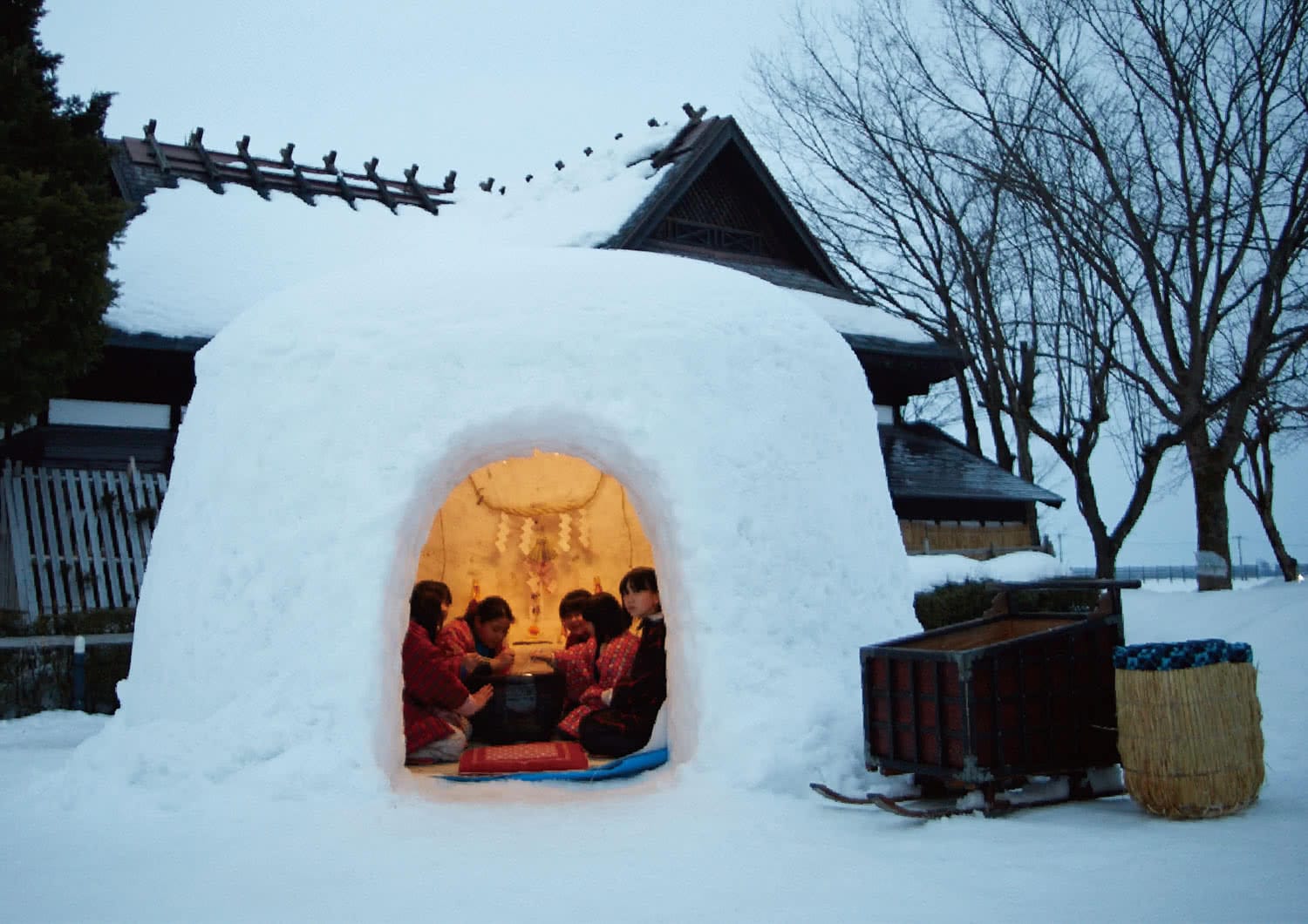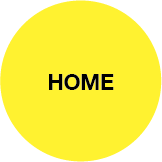The Yokote Kamakura festival is held in Yokote every year on February 15th and 16th. Kamakura (snow houses) are built throughout the town. It’s a magical sight, and lots of tourists come to see and enjoy the festival every year.
We’re at the venue for the event, talking with Yoshihito Terui from the Yokote City Tourism Association, who is chairman of the festival committee.
Lecturer:
Yoshihito TERUI
- 1. Kakunodate Hiburi Kamakura
- 2. Rokugo Kamakura
- 3. Yokote Kamakura (Part 1)
- 4. Yokote Kamakura (Part 2)
Written by Fumiko YABUKI
Editor; former designer. Born and raised in Akita, she is a hardcore Akita native! She is Deputy Chief Editor for the free magazine “non-biri”.
Photographs by Yoma FUNABASHI
3Yokote Kamakura (Part 1)
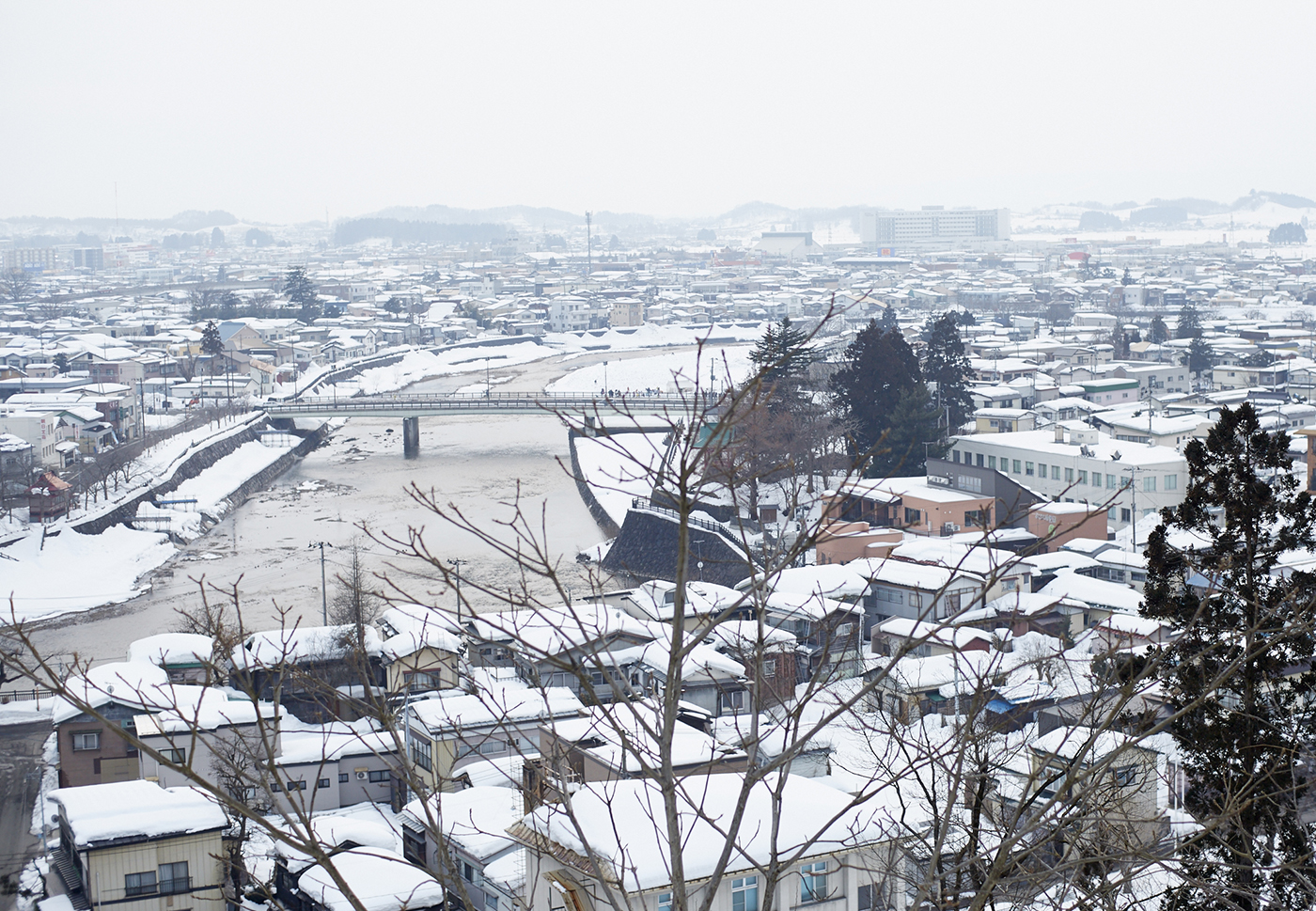
- TERUI
- The Yokote Kamakura festival has a lot of history behind it. It goes back around 450 years.
- YABUKI
- OK.
- TERUI
- There’s no written account of how the event started, but Yokote used to be a samurai town. The Yokote River flows through here. This side is where the samurai lived, while the merchants used to live on the other side.
- YABUKI
- I see.
- TERUI
- In the old samurai town, they held a koshogatsu event (“Little New Year”) when they used to burn all the New Year decorations, such as shimenawa (shinto ritual straw ropes). There’s a similar event like this, called Sagicho, which is held nationally, but here in Yokote they used a cauldron made out of snow for the bonfire. This is one of the theories of the origin of the festival.
- YABUKI
- I see!
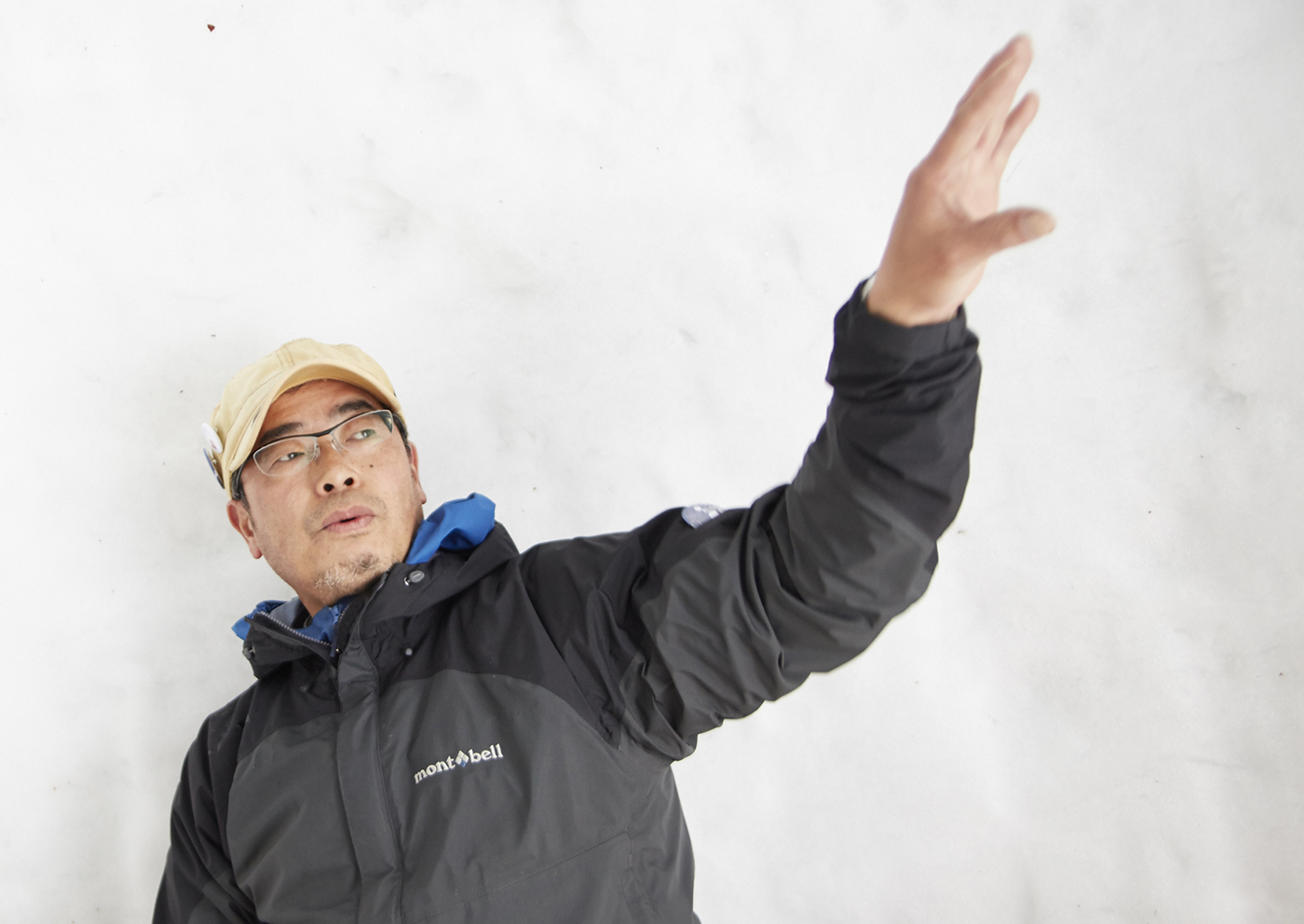
- TERUI
- Another theory is that in the merchant part of town, they had lots of problems with water…
- YABUKI
- You mean there like a disaster involving water?
- TERUI
- No, not so much flooding. More that there weren’t many wells so it was actually very difficult to get hold of water. So to give thanks for the water they had and to show their appreciation, the people started an event in honor of the god of water.
- YABUKI
- Right. I see…
- TERUI
- There’s a lot of snow in the countryside, so it’s fun to make yukiana (snow holes), hollowing out holes in the snow.
- YABUKI
- I see!

- TERUI
- I guess the event grew out of a combination of all these things. That’s as much as we know. So I suppose kamakura has come to mean places where the gods live or where they appear.
- YABUKI
- That’s really interesting! You also get theories about kamakura events in other places. They’re all quite obscure. I suppose that adds to the mystique…(Laughs)
- TERUI
- And, as I mentioned earlier, in this case it’s the god of water that is being honored, but that’s not to say that a festival like this has to involve worshipping a god…
- YABUKI
- Do you mean the god of water or something like that?
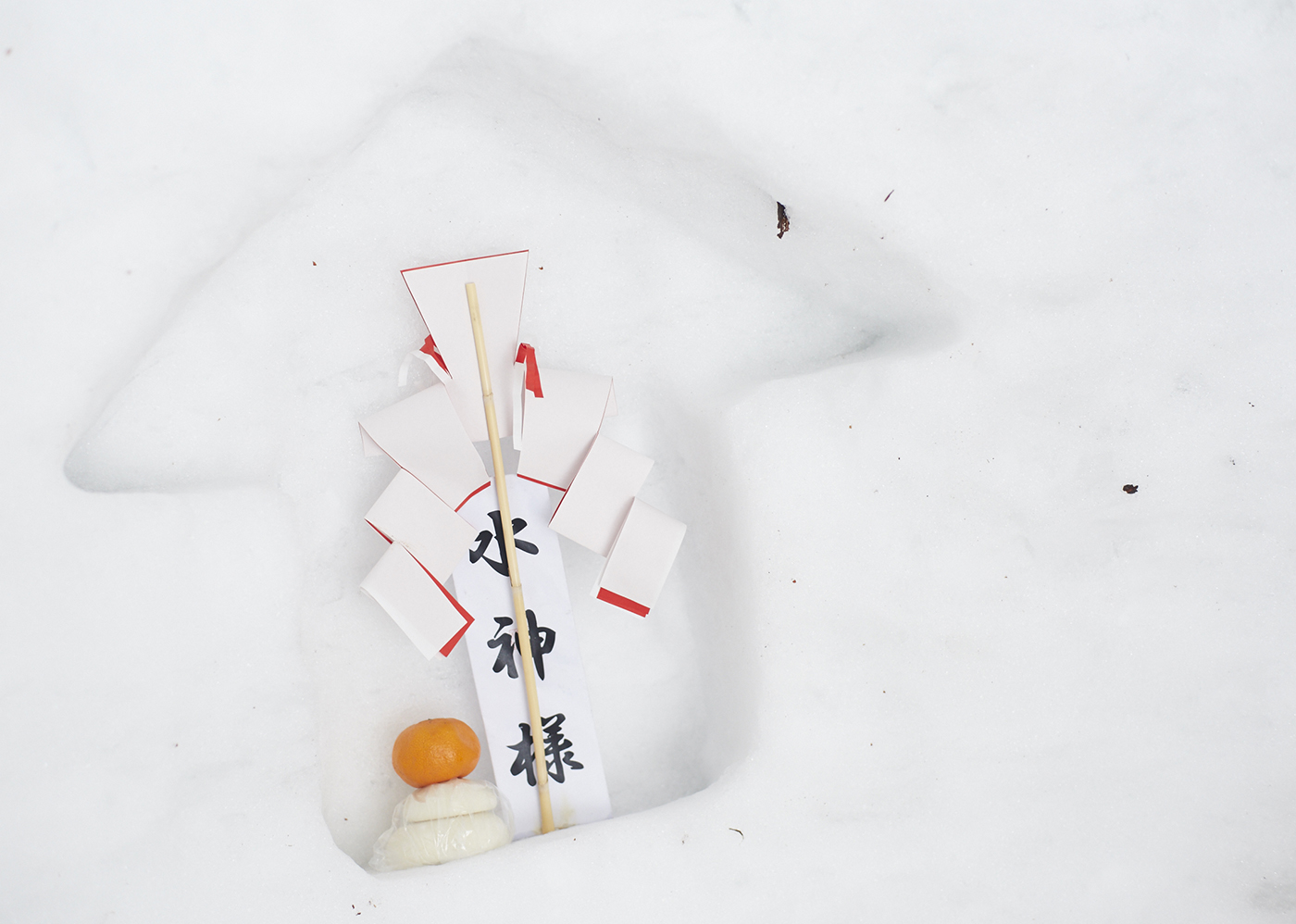
- TERUI
- Yes, indeed. It’s not a case of seeing God in everything, although that would be a perfectly good rationale. It’s because, in our own hearts, we feel grateful for what we have.
- YABUKI
- So it’s about giving thanks for whatever you feel like, eh?
- TERUI
- Just for these two days of Kamakura, the children can stay up late and no one minds or gets angry.
- YABUKI
- Ha! Ha!
- TERUI
- The children put clay stoves in the kamakura and cook mochi (rice cakes) and pour out amazake. “Come and drink some amaeko [amazake],” they say, and invite guests inside their snow houses.
- YABUKI
- I see.
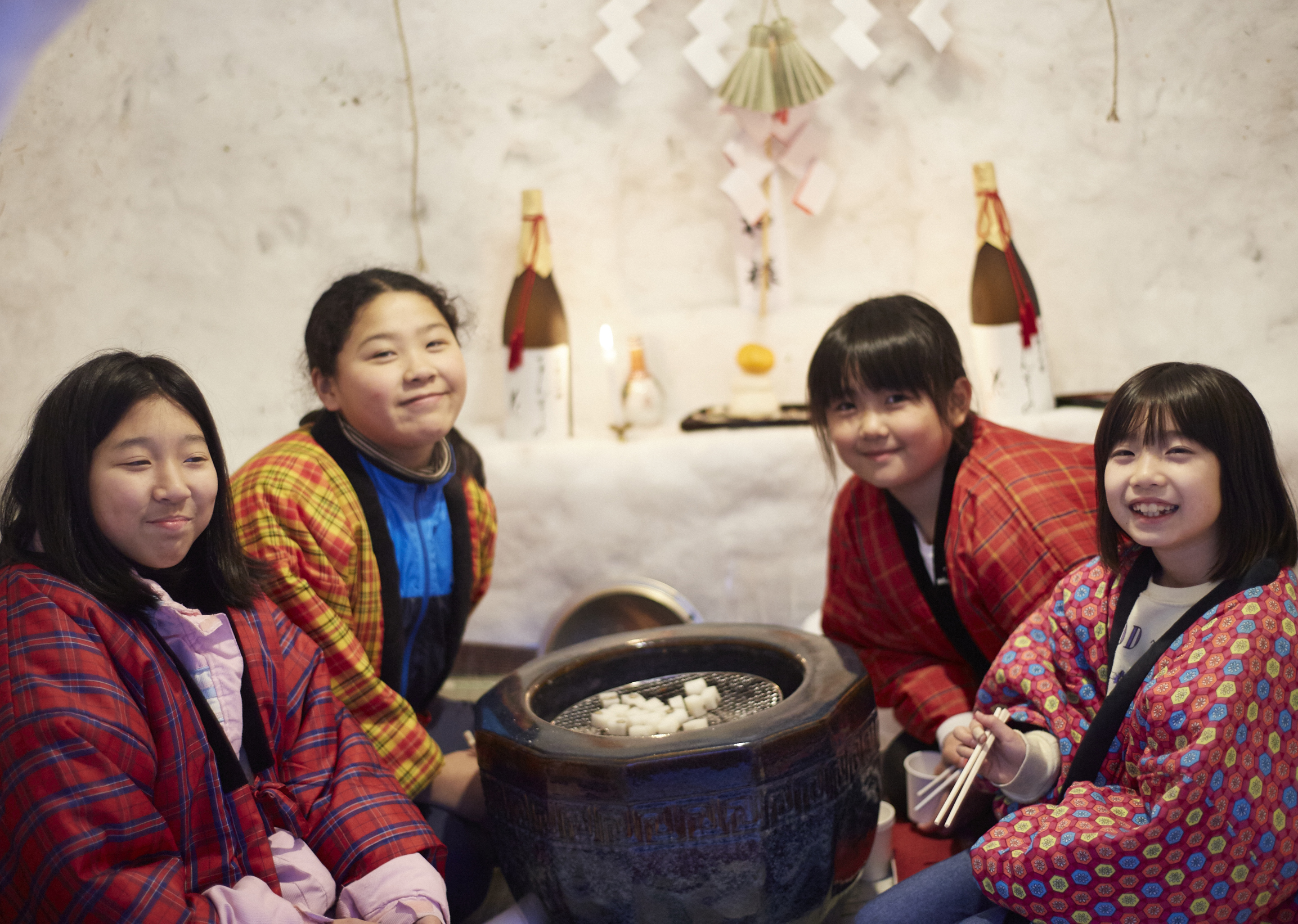

- TERUI
- For these two days, the children are the lords of the house. You wouldn’t normally hear children saying things like “Please have a drink [of sake].”
- YABUKI
- No. I should think not! It’s like they’re playing “Happy Families” and copying the kind of things that their parents would say.
- TERUI
- I guess so. They’re pretending to be grown-ups and saying things that adults say. From their point of view, they like asking the grown-ups to join them because they’ll get an offering to the deity or a bit of pocket money out of them.
- YABUKI
- Ha! Ha! Yeah right!
- TERUI
- Children and adults know each other so well, eh? This isn’t so much a “festival” as an “event.”
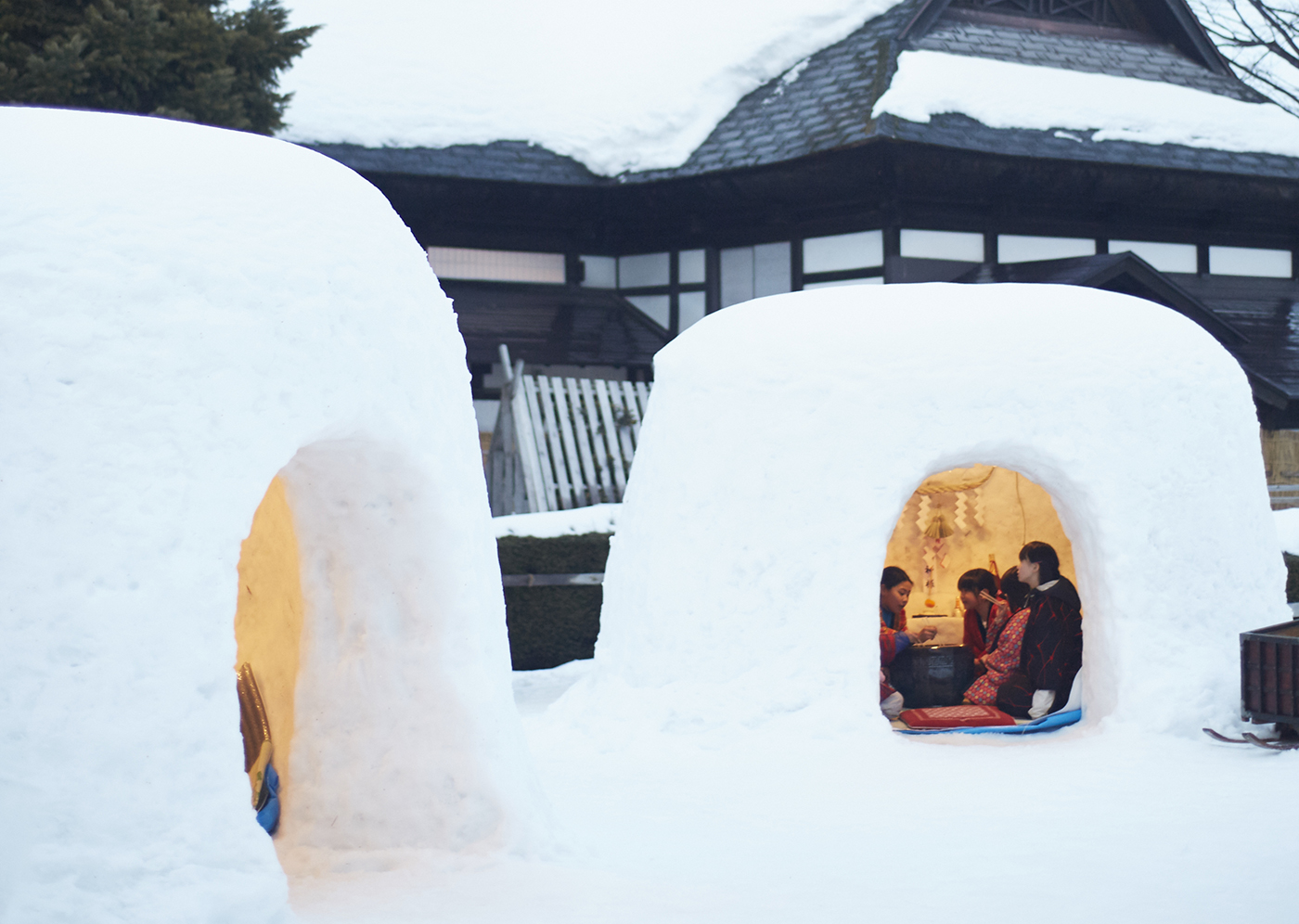
- YABUKI
- Children get such a thrill out of things like this, don’t they?! I have to say I’m so impressed. There are so many snow domes all over the town… Much more than I ever imagined. It’s so atmospheric!
- TERUI
- As a general rule they are around 3.5m wide and 3m high.
- YABUKI
- I heard that there are professional kamakura builders…
- TERUI
- Yep. That’s true. This year there are 20 or so. They’re aged late 30’s upwards. The oldest one is actually 77! They’re usually farmers or stone masons. They do this in winter when they tend not to have much other work on.
- YABUKI
- If they’re professionals, are they building a lot of these?
- TERUI
- The professionals themselves make around 80 kamakura every year.
- YABUKI
- That many? Wow!
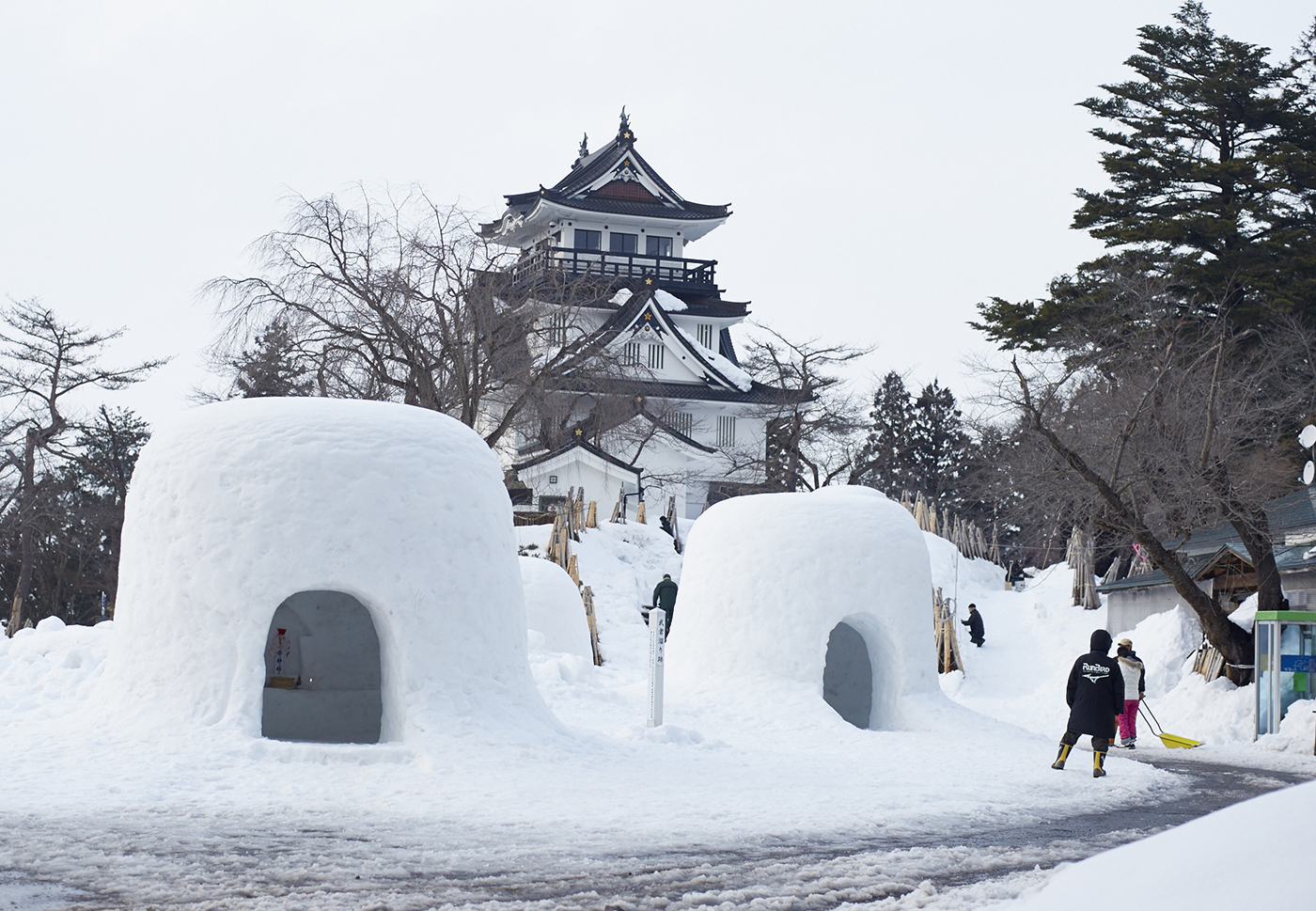
- TERUI
- But besides these, some families also make their own, and sometimes businesses sponsor the building of a kamakura. So during festival time there might be around 100 of these throughout the town.
- YABUKI
- How long does it take to build them?
- TERUI
- People start building from around the middle of January, a month before the festival. During that period, you might also have to make a few repairs to make sure the structure doesn’t fall over.
- YABUKI
- So it takes quite a bit of time to make each one, doesn’t it?
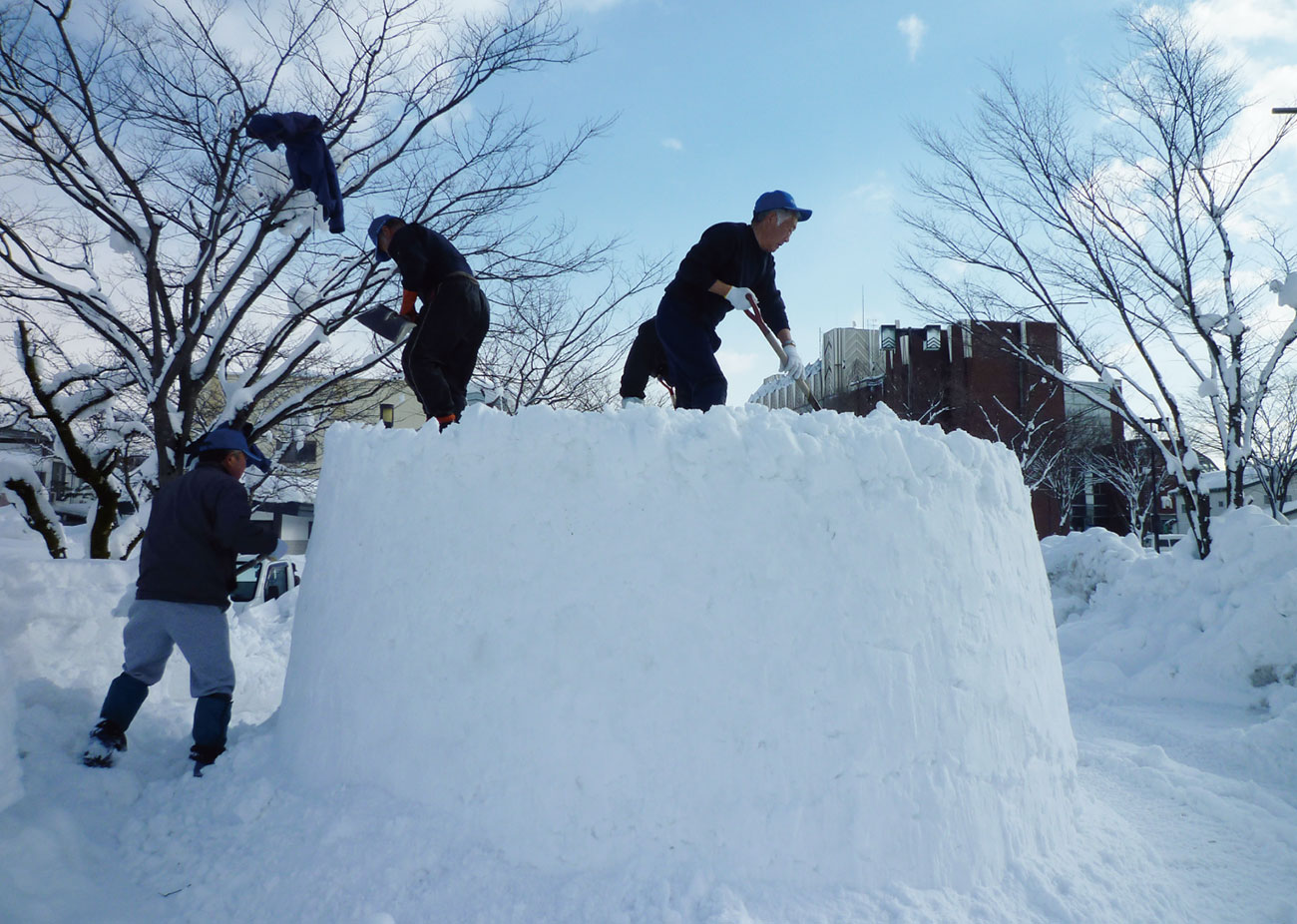
- TERUI
- Yep. That’s true. For each kamakura, you’ll have a group of four people working together. It takes half day a to pile up the snow with a snow loader. Then, another three days to pack the snow down and make it firm. Then about a half day to hollow the dome out.
- YABUKI
- I guess a lot of people still think you make these by piling up snow like bricks?
- TERUI
- That’s right. In terms of the shape, the kamakura used to be longer and flatter like an oblong, but nowadays they’re taller and narrower.
- YABUKI
- So why did that change?
- TERUI
- It’s to do with the roads. We don’t want them obstructing the cars if we build them at the side of the road. Over the course of 450 years, this event has adapted with the times and even the shape of the kamakura has changed.
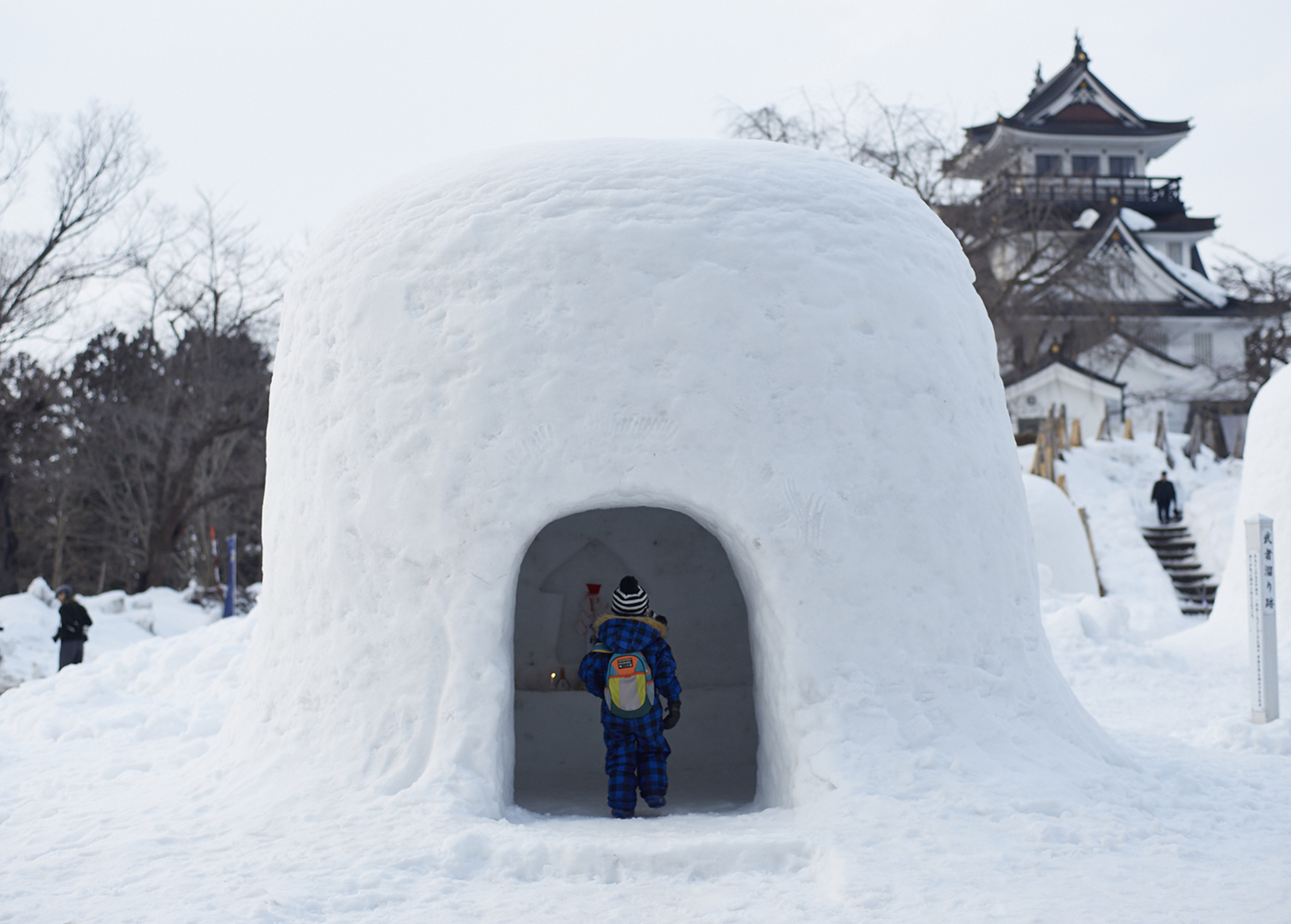
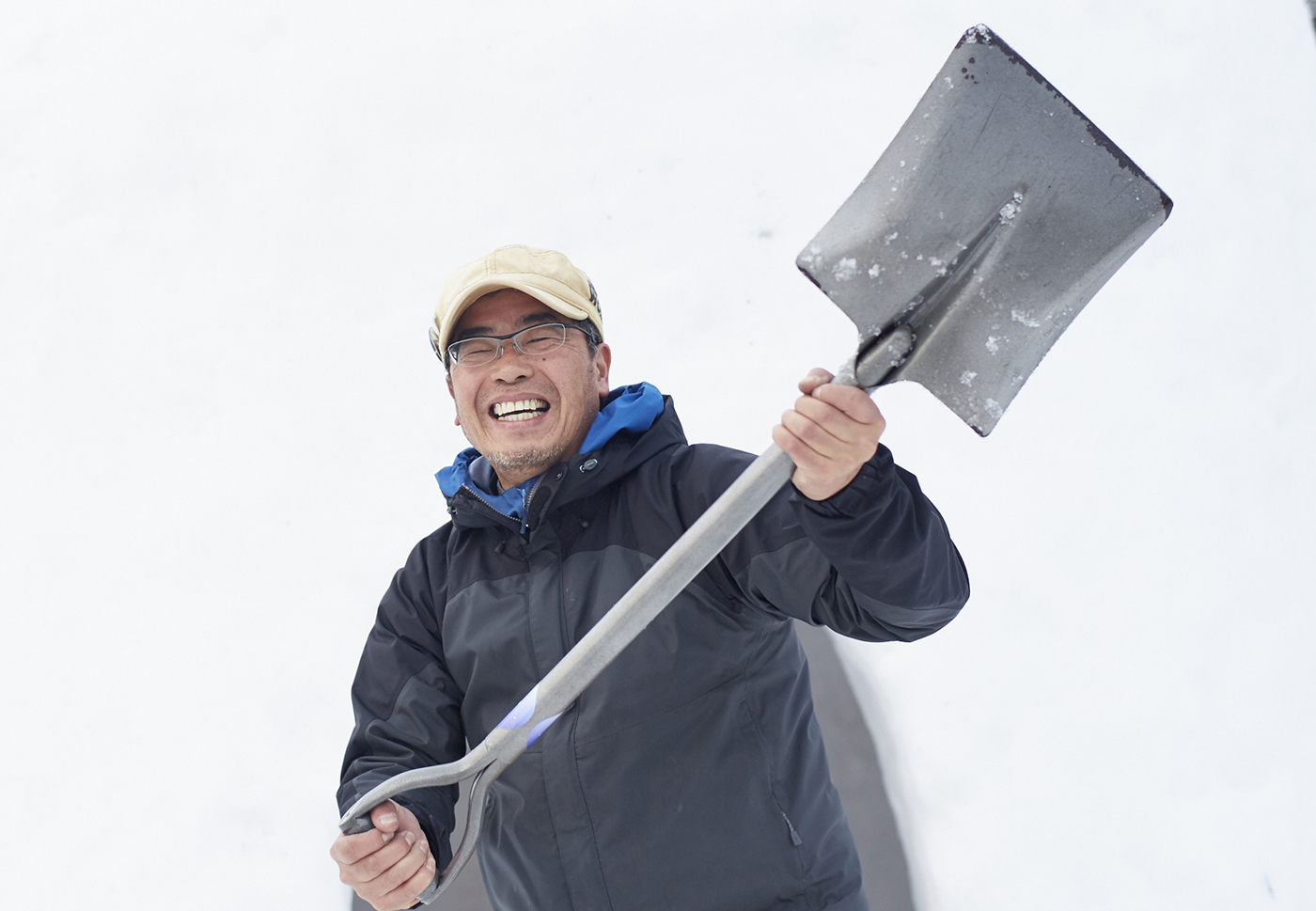
We’ve learned a lot from Terui-san about the Yokote Kamakura.
Next time we’ll hear more from him about the background to the event and about its prospects for the future.

